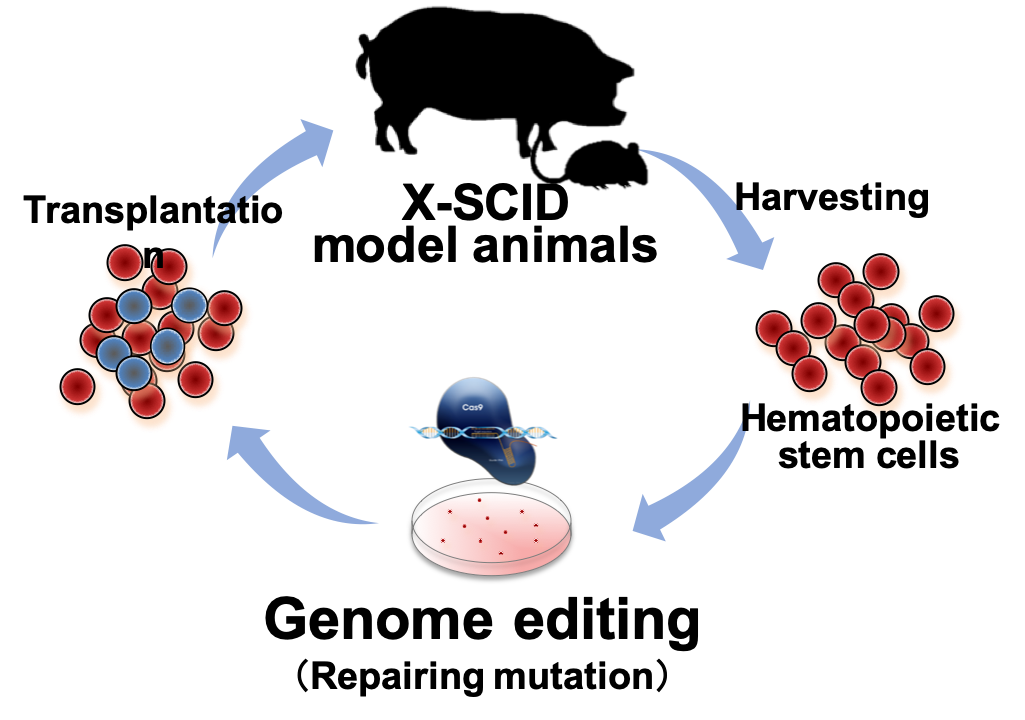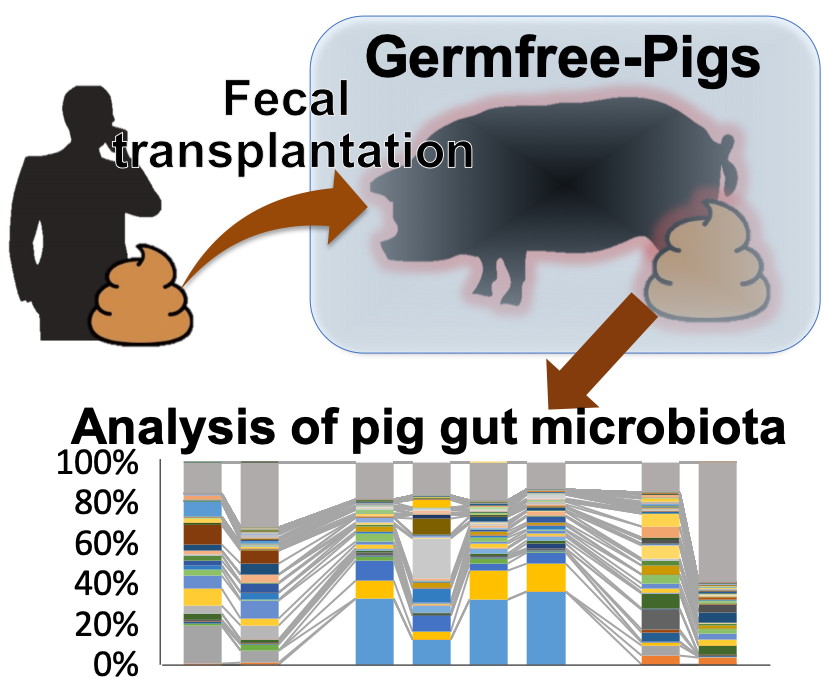


We have long been working on various large animal models in addition to mice.
Our models include non-human primates, sheeps and pigs, and research focuses have been hematopoietic stem cell transplantation and gene therapy (Hanazono, Stem Cells, 2001; Gene Ther, 2002), prion diseases (Hagiwara, PLoS One, 2019他), differentiation and long-term maintenance of hematopoietic stem cell in xenotransplantation setting(Sasaki, Transplantation, 2005), immunodeficient pigs and germ-free/humanized microbiota pigs

We are extensively working on developing a novel genome-editing therapy to correct genetic mutation in hematopoietic stem cells.
We are also studying general and cell-type specific DNA repair mechanisms.

It is still challenging to generate hematopoietic stem cells from human iPS cells. We are trying to overcome the issue using a sheep to provide essential niche.
We have reported human hematopoietic stem cells can engraft and maintain long-term in sheep bone marrow after transplantation into fetal sheep liver (Abe, Exp Hematol 2011; Exp Hematol, 2012; Exp Anim, 2014). We also fond that human iPS-derivatives turn into hematopoietic stem cells in vivo (Abe, in preparation).

A pig eats anything that human eats and it's gustrointestinal truct is very similar to that of human in anatomy and physilogy. Therefore, a pig can be a good animal model for microbiology study. As we are able to make and maintain pigs completely germ free, we transplanted human feces to the germ free pig to generate a pig with humanized microbiota. We are examining time course of microbiota and effects of feedings.